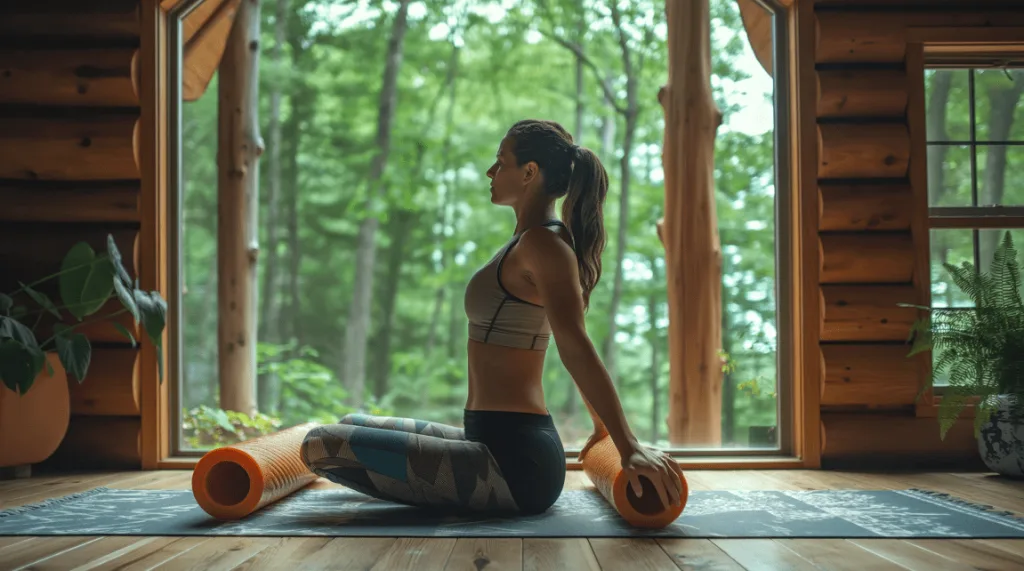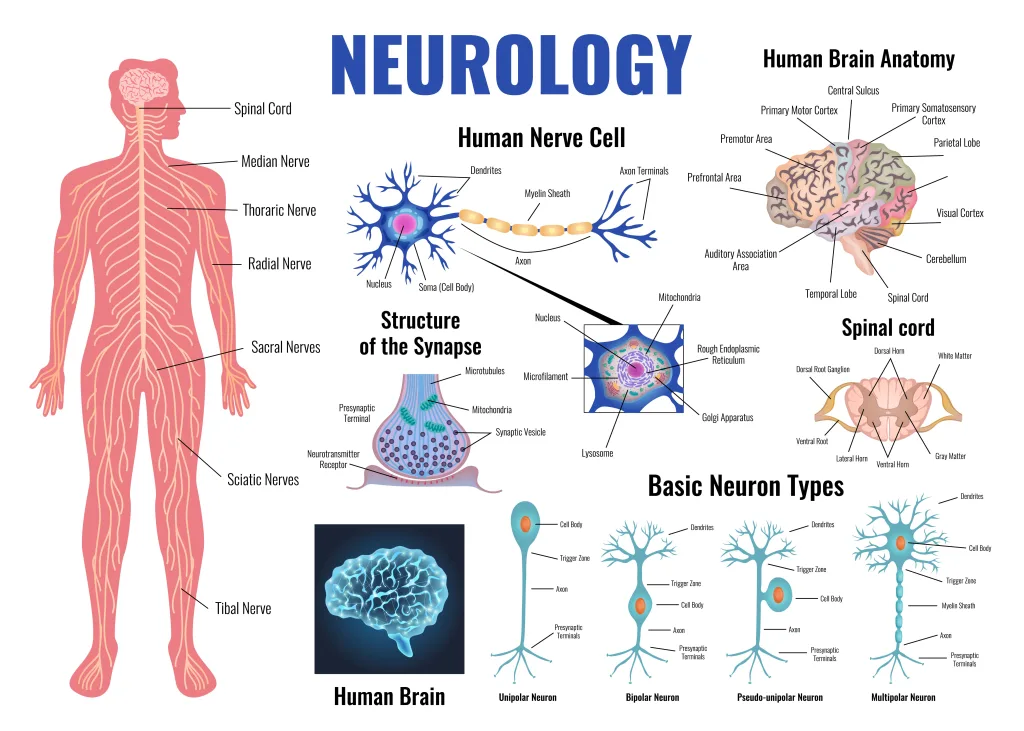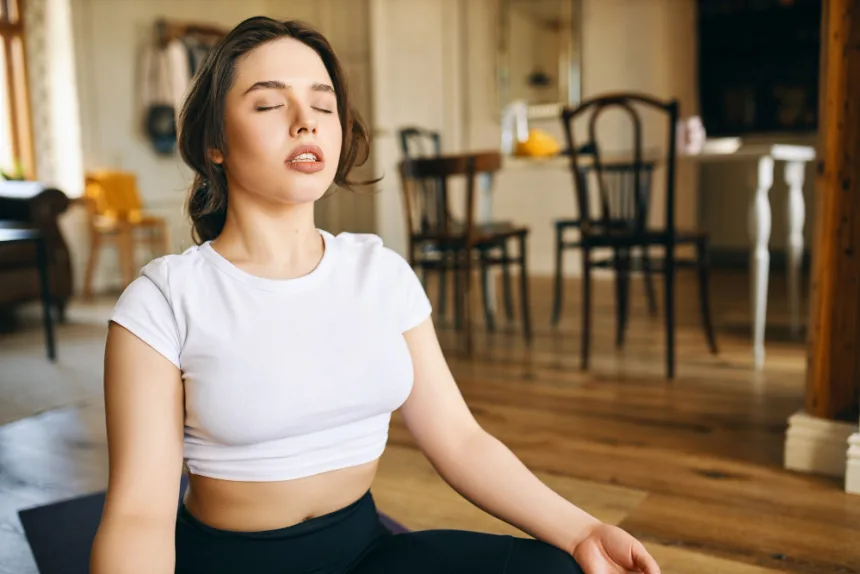Discover how simple breathing exercises can transform your meditation practice and enhance your overall wellbeing.
Introduction
Have you ever noticed how your breathing changes when you’re stressed? Or how a few deep breaths can instantly make you feel more centered? That’s no coincidence. Your breath is a powerful tool that connects your mind and body, serving as an anchor to the present moment.
As someone who struggled with anxiety for years, I discovered that breath meditation was my gateway to a calmer mind. I remember my first guided session—sitting cross-legged, feeling skeptical, and wondering if I was “doing it right.” Fast forward five years, and breathing techniques have become my daily sanctuary.
In this guide, we’ll explore various breathing techniques in meditation that can help you reduce stress, improve focus, and enhance your overall wellbeing. Whether you’re a meditation novice or looking to deepen your practice, these techniques are accessible to everyone.
What Is Breath Meditation?
Breath meditation, also known as breathwork or mindful breathing, is a practice that involves focusing your attention on your breath. It’s one of the oldest and most fundamental meditation techniques, serving as the foundation for many mindfulness practices.
“The breath is the bridge which connects life to consciousness, which unites your body to your thoughts,” writes Thich Nhat Hanh, and I couldn’t agree more.
Unlike more complex forms of meditation, breath meditation doesn’t require special equipment or extensive training. You simply need yourself and a few minutes of your day.
How Breath Meditation Works
When you focus on your breath, you’re essentially training your mind to stay present. Your breath serves as an anchor, constantly bringing your attention back to the here and now when your thoughts begin to wander.
This practice activates your parasympathetic nervous system—your body’s “rest and digest” mode—which counters the fight-or-flight response triggered by stress. The result? A calmer mind, reduced anxiety, and improved concentration.
10 Essential Breathing Techniques for Meditation

Let’s dive into some specific breathing techniques that can enhance your meditation practice. I’ve arranged these from beginner-friendly to more advanced options.
1. Basic Mindful Breathing
- How to practice: Find a comfortable position, close your eyes, and simply observe your natural breath without changing it. Notice the sensation of air entering and leaving your nostrils, the rise and fall of your chest, and the expansion and contraction of your abdomen.
- Benefits: This technique forms the foundation of mindfulness meditation, helping to anchor your attention to the present moment and develop greater awareness.
- When to use it: Ideal for beginners or anytime you need to center yourself quickly.
2. Diaphragmatic Breathing (Belly Breathing)
- How to practice: Place one hand on your chest and the other on your abdomen. Breathe in deeply through your nose, ensuring that your diaphragm (not your chest) inflates with enough air to create a stretch in your lungs. The hand on your abdomen should rise higher than the one on your chest.
- Benefits: Engages the diaphragm fully, increasing oxygen exchange and activating the parasympathetic nervous system.
- When to use it: When you’re feeling anxious or need to calm your nervous system.
3. The 4-7-8 Breathing Technique
- How to practice: Inhale quietly through your nose for 4 seconds, hold your breath for 7 seconds, then exhale completely through your mouth for 8 seconds. Repeat this cycle four times.
- Benefits: Acts as a natural tranquilizer for the nervous system, helping to reduce anxiety and promote sleep.
- When to use it: Before bed or during moments of acute stress.
4. Box Breathing
- How to practice: Inhale for 4 seconds, hold for 4 seconds, exhale for 4 seconds, hold for 4 seconds. Visualize tracing the four sides of a square as you breathe.
- Benefits: Creates balance and equilibrium, useful for stress management and improving concentration.
- When to use it: During stressful situations or when you need to focus.
5. Alternate Nostril Breathing (Nadi Shodhana)
How to practice:
- Use your right thumb to close your right nostril
- Inhale through your left nostril
- Close your left nostril with your ring finger
- Release your right nostril and exhale
- Inhale through your right nostril
- Close your right nostril, release your left nostril, and exhale
- Continue this pattern
Benefits: Balances the left and right hemispheres of the brain, promoting mental clarity and reducing stress.
When to use it: When you need to balance energy or clear mental fog.
6. Breath Counting

- How to practice: Take natural breaths, counting each exhale until you reach 10, then start over. If you lose track, simply begin again at 1.
- Benefits: Improves concentration and helps prevent mind-wandering during meditation.
- When to use it: When you’re having trouble focusing during meditation.
7. Ujjayi Breathing (Ocean Breath)
- How to practice: Slightly constrict the back of your throat as you breathe, creating a soft, ocean-like sound.
- Benefits: Increases oxygen intake, builds internal heat, and helps maintain focus.
- When to use it: During yoga practice or when you need to energize yourself.
8. Cyclic Sighing
- How to practice: Inhale through your nose, take a second shorter inhale to fill your lungs completely, then exhale slowly through your mouth.
- Benefits: Research from Stanford University suggests this technique is particularly effective for reducing anxiety and improving mood in just 5 minutes.
- When to use it: When you need quick stress relief.
9. Humming Bee Breath (Bhramari)
- How to practice: Take a deep breath in, then make a humming sound like a bee while exhaling.
- Benefits: Releases tension, anxiety, and anger; helpful for those with high blood pressure.
- When to use it: When you’re feeling frustrated or need to calm down quickly.
10. Complete Breath (Three-Part Breath)
- How to practice: Inhale deeply, filling first your lower lungs (abdomen expands), then your middle lungs (ribs expand), and finally your upper lungs (chest rises slightly). Exhale in the reverse order.
- Benefits: Maximizes lung capacity and oxygen intake, calming the mind and energizing the body.
- When to use it: When you need both relaxation and rejuvenation.
Comparing Popular Breathing Techniques
| Technique | Difficulty Level | Time Required | Best For | Key Benefit |
|---|---|---|---|---|
| Basic Mindful Breathing | Beginner | 5-10 min | Daily practice | Present moment awareness |
| Diaphragmatic Breathing | Beginner | 5-10 min | Stress relief | Activates relaxation response |
| 4-7-8 Technique | Beginner/Intermediate | 5 min | Sleep issues | Quick anxiety relief |
| Box Breathing | Beginner | 5 min | Stress management | Balance and control |
| Alternate Nostril | Intermediate | 5-10 min | Mental clarity | Brain hemispheric balance |
| Breath Counting | Beginner | 10 min | Concentration | Improved focus |
| Ujjayi Breathing | Intermediate | 5-15 min | Energy | Increased vitality |
| Cyclic Sighing | Beginner | 5 min | Quick stress relief | Rapid mood improvement |
| Humming Bee Breath | Intermediate | 5 min | Anger management | Immediate calming effect |
| Complete Breath | Advanced | 10 min | Comprehensive practice | Full oxygenation |
Benefits of Breathing Techniques in Meditation

The power of conscious breathing extends far beyond relaxation. Here’s how these techniques can transform your wellbeing:
Mental Benefits
- Stress Reduction: Perhaps the most immediate benefit of breathwork is stress relief. Research shows that controlled breathing activates your parasympathetic nervous system, decreasing cortisol levels and promoting relaxation.
- Improved Focus: Regular breath meditation enhances concentration by training your mind to focus on a single point of attention—your breath.
- Emotional Regulation: By connecting with your breath, you create space between stimuli and response, allowing for more thoughtful reactions to challenging situations.
Physical Benefits
- Lowered Blood Pressure: Studies have shown that regular breathing exercises can help reduce blood pressure, benefiting cardiovascular health.
- Enhanced Lung Function: Deep breathing exercises increase lung capacity and efficiency, improving oxygen exchange.
- Improved Sleep Quality: Techniques like the 4-7-8 method can help calm your nervous system before bed, promoting better sleep.
Impact on Overall Wellbeing
I’ve personally experienced how consistent breathwork can transform daily life. What began as a simple practice to manage anxiety has evolved into a tool that helps me navigate life’s complexities with greater ease and presence.
Getting Started with Breath Meditation

Creating Your Practice Space
You don’t need a fancy meditation room to practice breath meditation. Find a quiet corner in your home where you won’t be disturbed. Add elements that promote relaxation—perhaps a cushion, a candle, or a plant.
Establishing a Routine
Consistency is key. I recommend starting with just 5 minutes daily, preferably at the same time each day. Morning practice sets a positive tone for your day, while evening sessions can help wind down.
Common Challenges and Solutions
- Challenge: Mind wandering Solution: When you notice your thoughts drifting, gently bring your attention back to your breath without judgment.
- Challenge: Physical discomfort Solution: Adjust your position or try meditating in a chair instead of cross-legged on the floor.
- Challenge: Inconsistency Solution: Link your practice to an existing habit, like brushing your teeth, to build consistency.

How Different Breathing Techniques Affect Your Brain and Body
The science behind breathing techniques is fascinating. Let’s look at how various methods influence your physiology:
Brain Wave Patterns
Research using EEG monitoring shows that certain breathing patterns can shift brain waves from beta (normal waking consciousness) to alpha (relaxed alertness) and even theta (deep meditation) states.
Heart Rate Variability
Slow, controlled breathing increases heart rate variability (HRV)—a key indicator of cardiovascular health and stress resilience.
Nervous System Regulation
The graph below illustrates how different breathing techniques impact our autonomic nervous system:
[Insert graph showing relationship between breathing techniques and nervous system activation]
Integrating Breathing Techniques into Daily Life
The beauty of breath meditation is that it can be practiced anywhere, anytime. Here are some suggestions for incorporating these techniques into your daily routine:
Morning Breathwork
Start your day with 5 minutes of mindful breathing to set a positive tone.
Breathing Breaks
Take short breathing breaks throughout your workday. Even 60 seconds of intentional breathing can reset your nervous system.
Evening Wind-Down
Practice the 4-7-8 technique before bed to prepare for restful sleep.
Breathing Through Difficult Moments
When facing stress, remember you always have your breath as an anchor. A few conscious breaths can make all the difference in how you respond to challenging situations.
Tools and Resources to Support Your Practice
Apps for Guided Breathing
Several apps can guide you through breathing exercises:
- Calm: Offers various guided breathing sessions
- Headspace: Includes breathing exercises tailored to different needs
- Insight Timer: Provides free guided meditations with breathing components
Meditation Accessories
While not necessary, these tools can enhance your practice:
- Meditation cushions: Support proper posture
- Timing apps: Help track your sessions
- Muse headband: Provides brainwave feedback during meditation
Frequently Asked Questions About Breathing Techniques in Meditation

What is breath meditation?
Breath meditation involves focusing on your breath to achieve a state of calm and awareness. It’s a foundational practice in mindfulness meditation, using the natural rhythm of breathing as an anchor for attention.
How do I practice breath meditation?
Find a quiet space, adopt a comfortable seated position with your back straight, and focus on the natural flow of your breath without trying to change it. When your mind wanders (which it will), gently bring your attention back to your breathing.
What is the 4-7-8 breathing technique?
The 4-7-8 technique involves inhaling quietly through your nose for 4 seconds, holding your breath for 7 seconds, and exhaling completely through your mouth for 8 seconds. This pattern activates your parasympathetic nervous system, reducing anxiety and promoting relaxation.
Can breathing exercises help with stress relief?
Absolutely! Breathing exercises are powerful tools for stress management. Techniques like cyclic sighing and box breathing can quickly activate your body’s relaxation response, reducing cortisol levels and calming your nervous system.
How often should I practice breathing meditation?
For optimal benefits, aim to practice daily, even if just for a few minutes. Consistency matters more than duration. Start with 5 minutes daily, then gradually increase as your comfort level grows.
What are the benefits of diaphragmatic breathing?
Diaphragmatic breathing engages your diaphragm muscle, promoting deeper oxygen exchange and activating the parasympathetic nervous system. Benefits include reduced stress, lower blood pressure, improved core stability, and better breath control.

Can breathing exercises improve sleep?
Yes! Techniques like the 4-7-8 method can significantly improve sleep quality by calming your nervous system before bedtime. Regular practice can help reduce the time it takes to fall asleep and improve sleep continuity.
How does mindful breathing differ from other meditation techniques?
While other meditation methods might use mantras, visualization, or body scanning, mindful breathing focuses solely on the breath as the object of attention. This simplicity makes it accessible for beginners while still providing profound benefits.
Can breathing exercises be used for physical health benefits?
Research shows breathing exercises can improve heart rate variability, boost immune function, reduce inflammation, and help manage symptoms of conditions like asthma and COPD. They’re also beneficial for recovering from COVID-19.
Are there any risks associated with deep breathing exercises?
While generally safe, deep breathing can occasionally cause dizziness or lightheadedness due to hyperventilation. If you experience these symptoms, return to normal breathing. People with certain health conditions should consult their healthcare provider before practicing intense breathing techniques.
Conclusion
Breathing is something we do roughly 20,000 times per day—mostly unconsciously. By bringing awareness to this automatic process, we unlock a powerful tool for transformation that’s available to us in every moment.
I encourage you to experiment with these techniques, finding what resonates with your body and mind. Remember that like any skill, breath meditation improves with practice. Be patient with yourself and approach your practice with curiosity rather than judgment.
The journey of breath awareness is deeply personal. What begins as a simple focus on inhalation and exhalation can open doors to profound inner peace and self-understanding.
What breathing technique will you try today?
Attention! Freebie!






Good